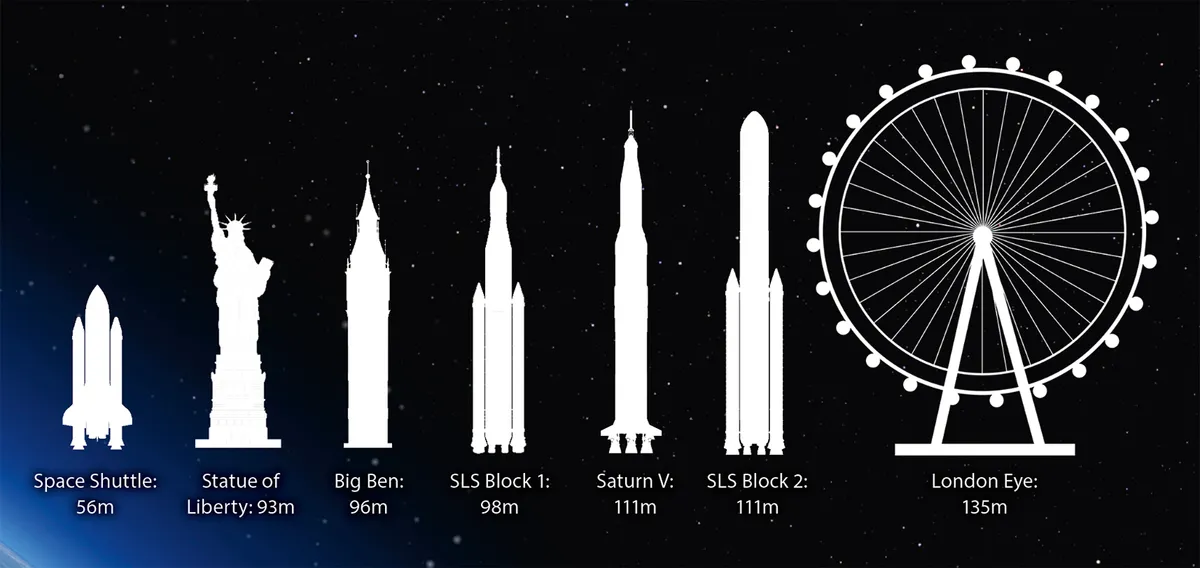There were emotional scenes at NASA’s Kennedy Space Centre in Florida yesterday afternoon, 17 March, as the space agency’s huge Space Launch System (SLS) rocket was rolled out.
Flags were waved, speeches made, a brass band played and an estimated tens of thousands of space enthusiasts, reporters and dignitaries – including at least one Apollo astronaut - watched as the Space Launch System rocket emerged from the towering Vehicle Assembly Building (VAB) atop an enormous tracked transporter vehicle.

Ahead of it was an 11-hour journey up to the launch pad from where it will be put through a series of fuelling and systems tests before launching for the first time, no earlier than June.
Watched live online by countless thousands of space exploration fans and armchair astronauts around the world, last night’s roll-out was an historic event because SLS is the rocket that will eventually take astronauts to the Moon on the Artemis missions.
The rocket’s first flight - named Artemis I - this summer will send an uncrewed Orion capsule round the Moon and back.
NASA hopes that in around 4 years’ time the third Artemis mission will carry a team of astronauts to the Moon, to attempt the first crewed landing since the final Apollo mission, Apollo 17, in 1972.
What is the Space Launch System?

111m (365ft) high and 8.4m (28ft) wide, the Space Launch System is similar in size to the mighty Saturn V rockets that took the Apollo crews to the Moon.
SLS comprises a huge central liquid fuel 'core' and a pair of solid rocket boosters (SRBs), which will work together to lift the Orion crewed capsule into orbit and send it to the Moon.
Unlike the Falcon rockets that now fly – and return to Earth after delivering their payloads to space - so regularly, SLS is an expendable launch vehicle, not designed to be reused.
The rocket’s enormous cost has led to a lot of criticism. Each launch will cost an estimated 2 billion dollars, on top of the 23 billion dollars it has cost to design and develop the rocket since 2011, when it was selected to replace the cancelled Ares program.

But even the rocket’s harshest critics had to agree that it looked impressive as it rolled away from the VAB last night, bathed in the beams of powerful spotlights as, appropriately for the occasion, a beautiful full Moon rose into the sky ahead of it.
One of the reasons SLS looks so striking is its colour scheme.
Unlike its gleaming black and white predecessors, the mighty and much-loved Saturn V rockets, SLS has a striking orange core, reminiscent of the Space Shuttle’s external fuel tank.
And as the new rocket emerged from the cavernous depths of the VAB last night and into the late afternoon Florida sunshine, many observers and commentators were delighted to see a flash of red on the side of its white SRBs – the historic 'NASA worm' logo.

And last night, as darkness fell and the International Space Station arced over the space centre, the giant rocket, worm and all, was a very impressive sight, especially for those of us who were born too late to witness the Apollo missions as they happened.
For us, seeing this huge rocket making its way to the launch pad was very exciting and more than a little moving. It’s close now, we can feel it. We’re about to have our own Apollo.
For many space enthusiasts, SLS and Artemis represent a long overdue next step in our exploration of space.
After the Apollo missions ended, a return to the Moon seemed inevitable, but as costs increased and budgets shrank program after program was postponed and then cancelled, and as the 50th anniversary of the Apollo 11 landing came and went, scientists and enthusiasts alike were left frustrated that there were still no new boot-prints in the lunar dust.

That will change in a few years when the Artemis 3 mission lands on the Moon, possibly in 2026, watched no doubt by millions round the world.
Subsequent Artemis missions will pave the way for the construction of a crewed base on the Moon, which in turn will, it is hoped, lead to the first crewed expeditions to Mars.
But those historic events are far away. For now there is huge excitement – and relief – that after years of existing only in Powerpoint presentations and as computer graphics an actual SLS rocket is now complete, and will, within a few months, thunder into the Florida sky on twin pillars of crackling flame, heading for the Moon.

